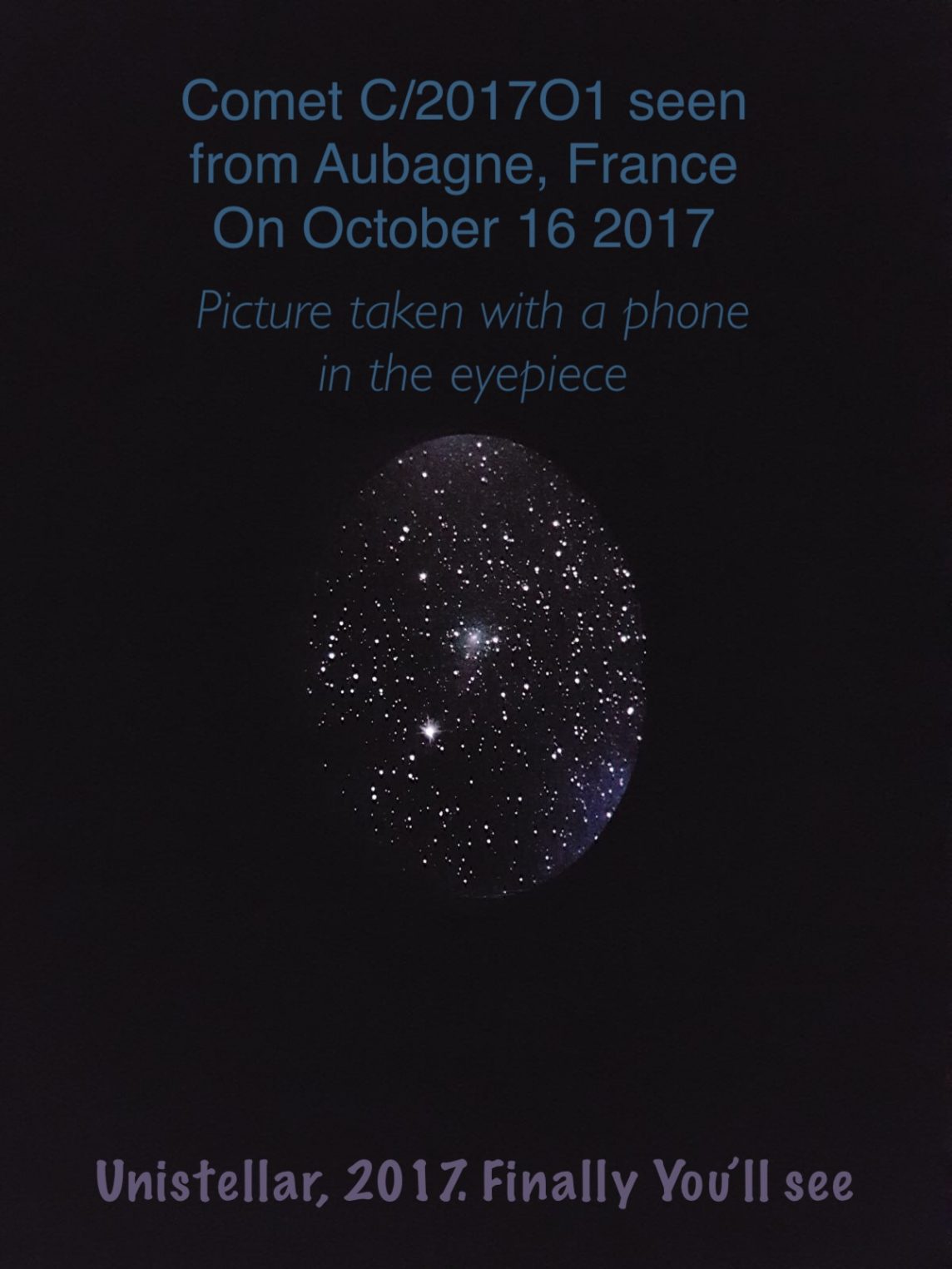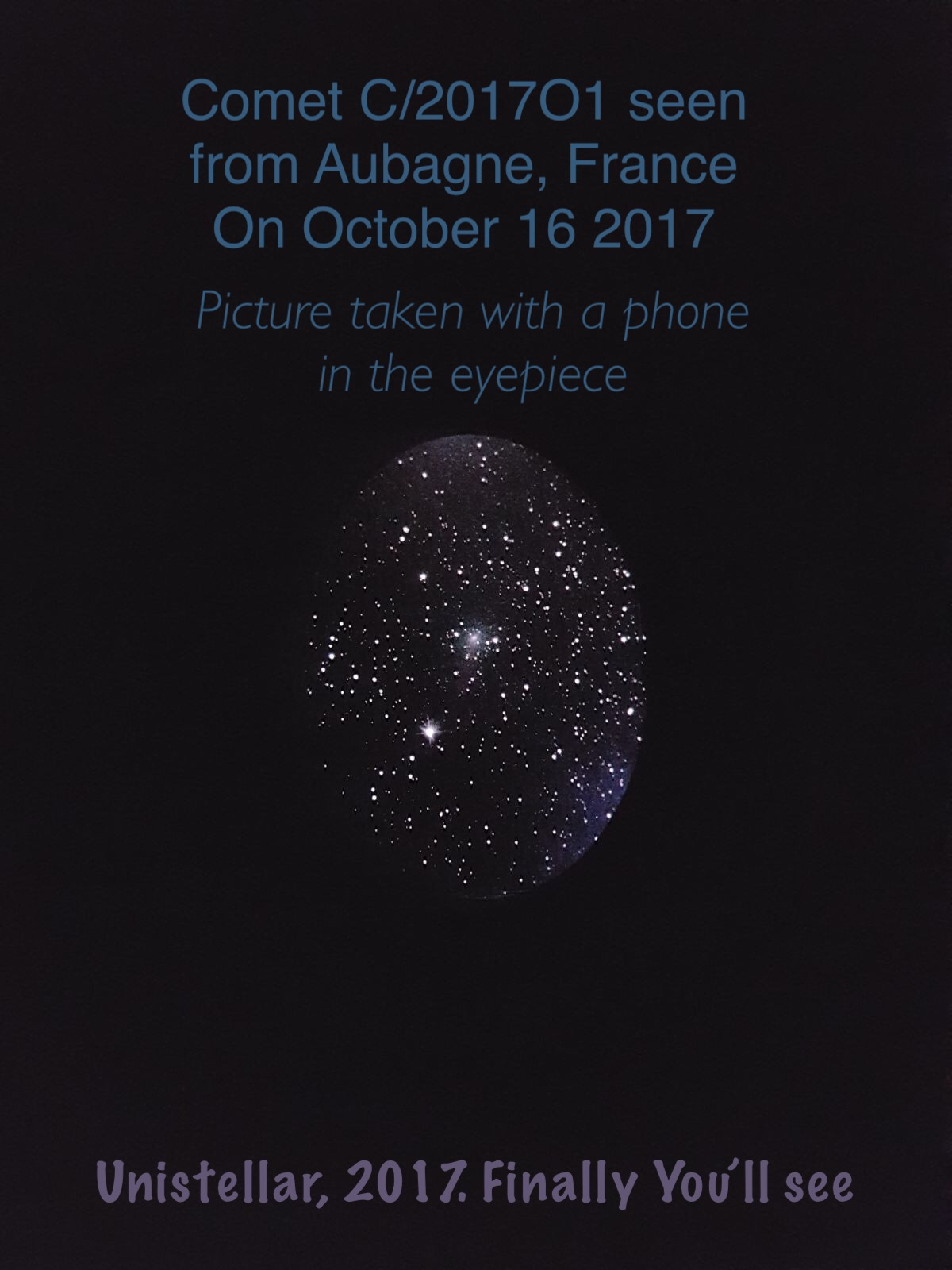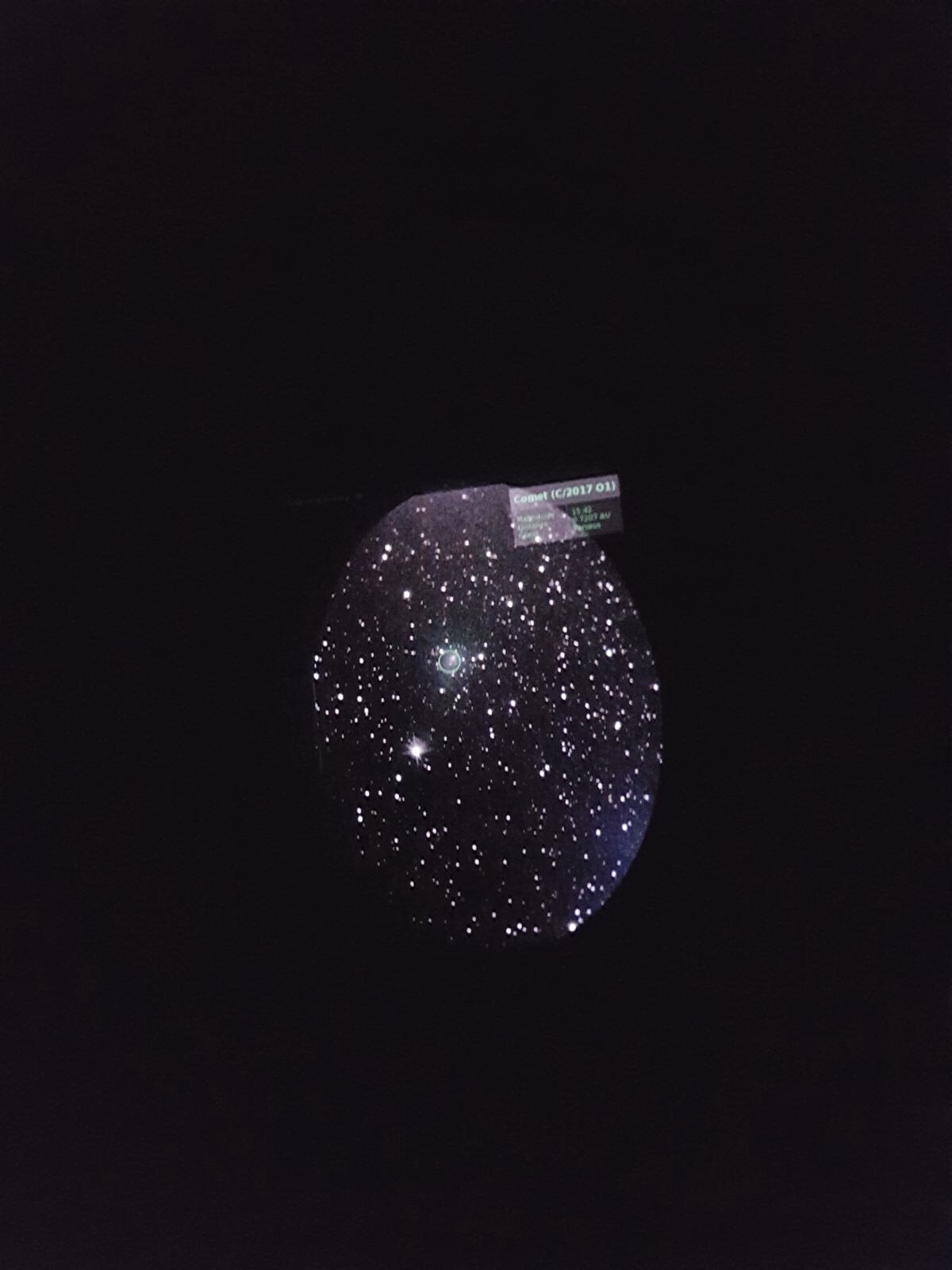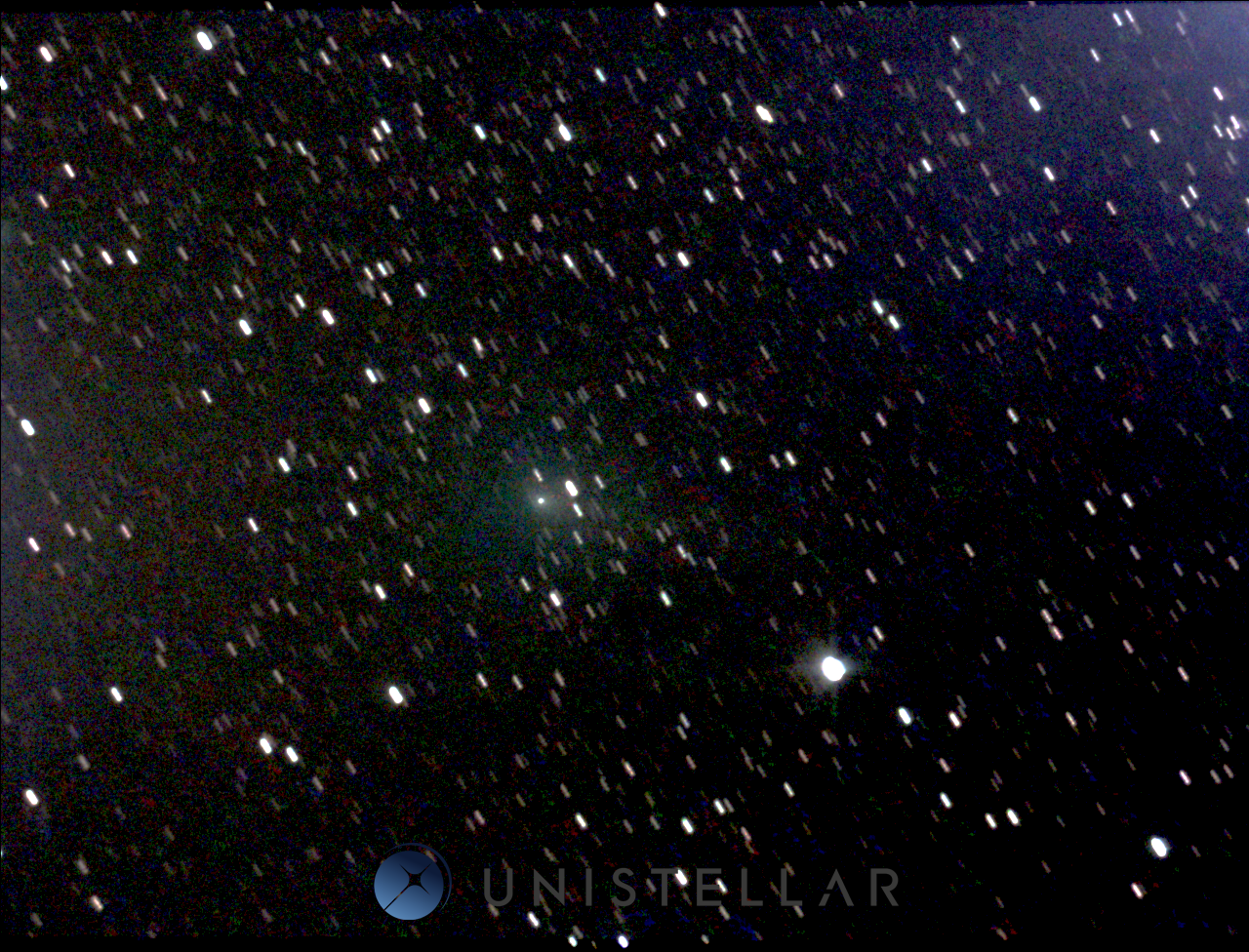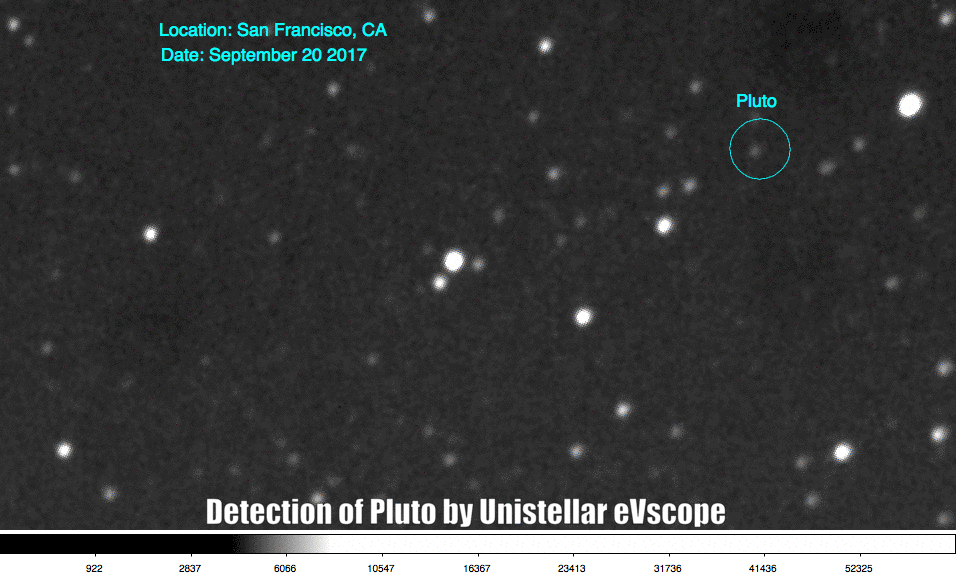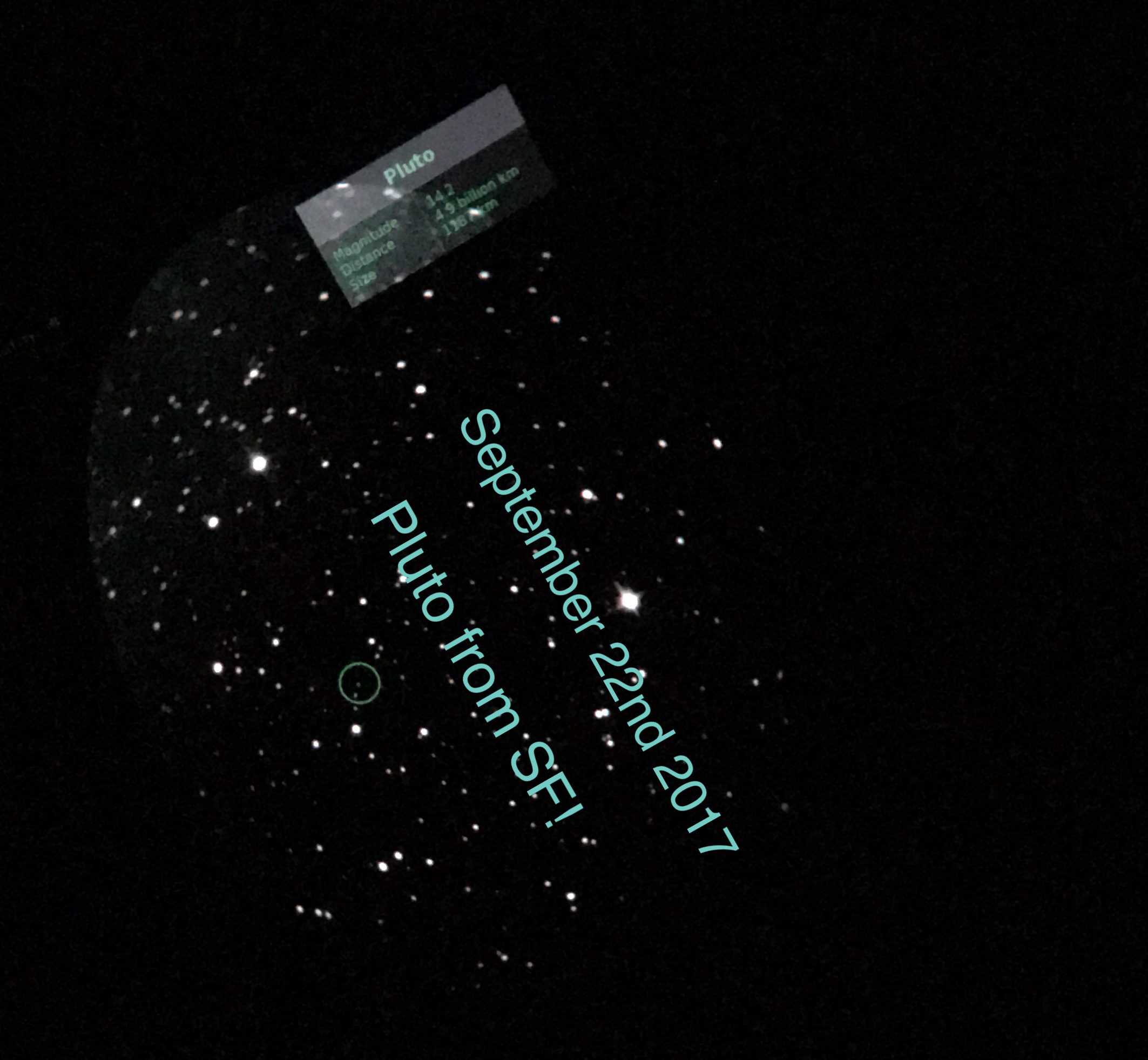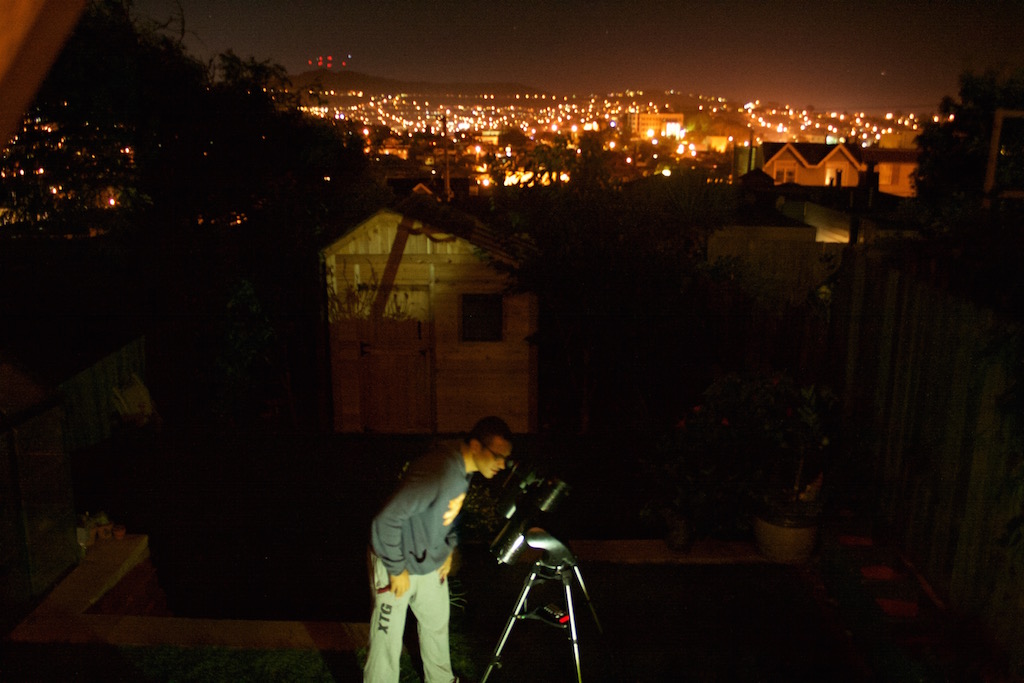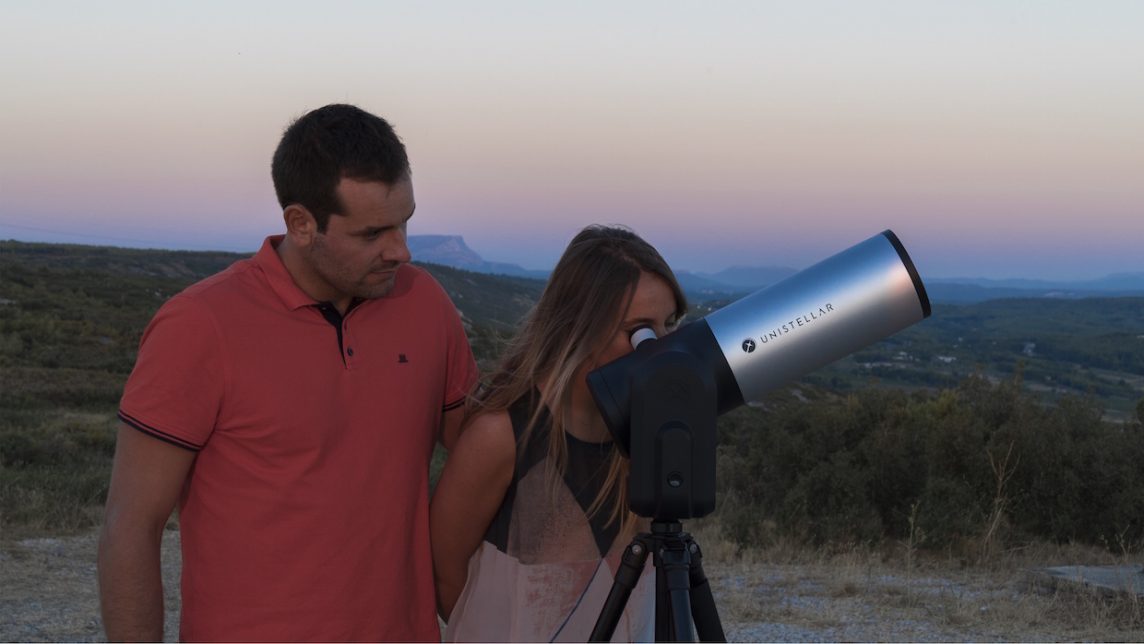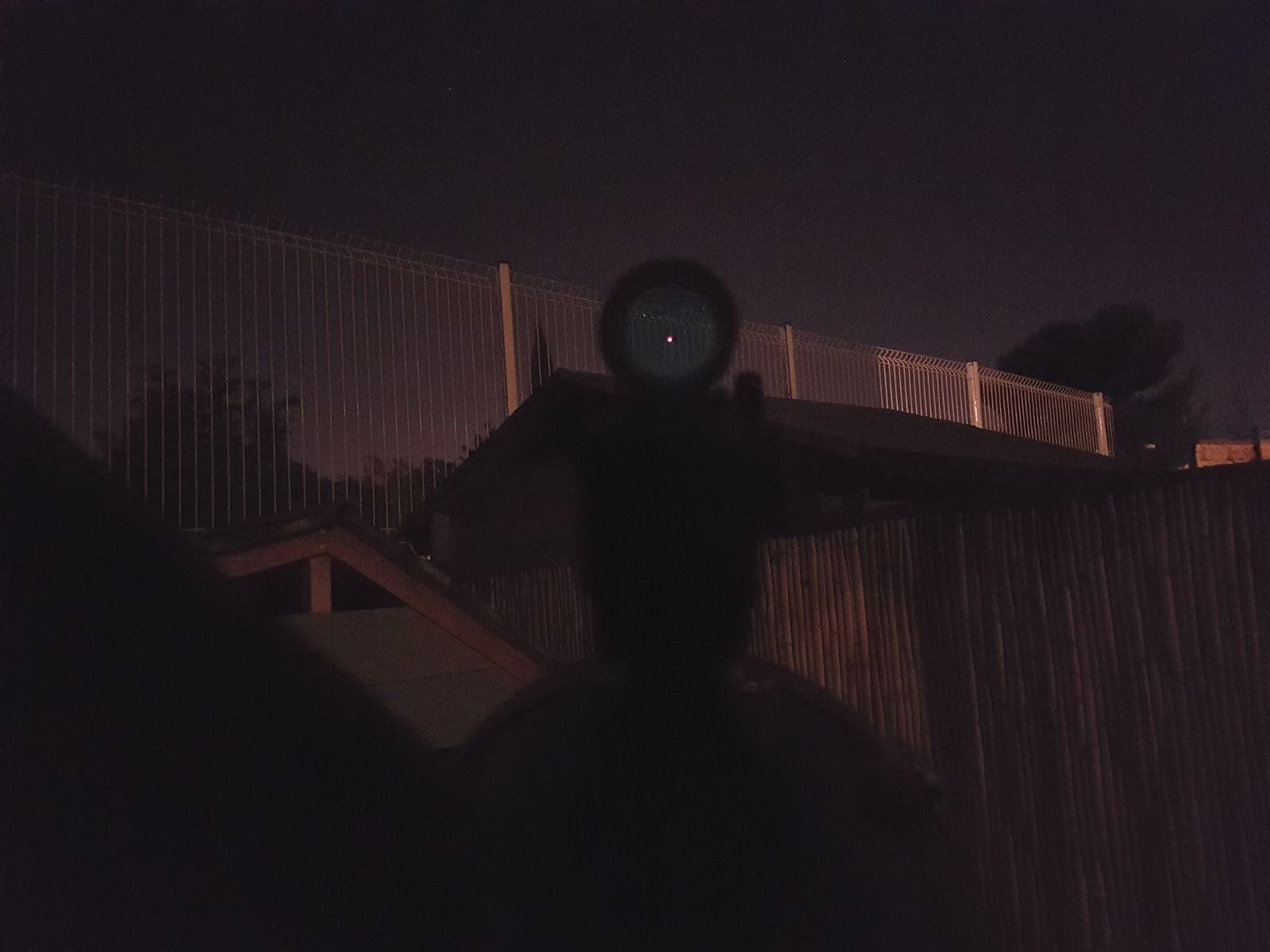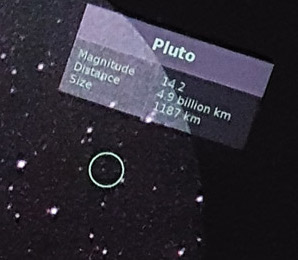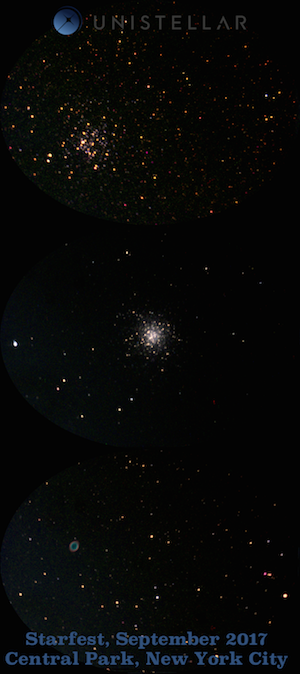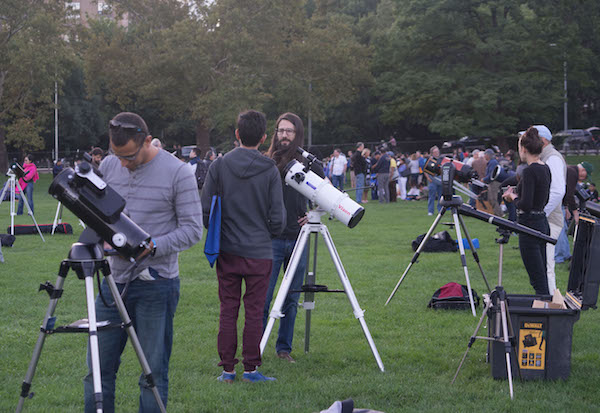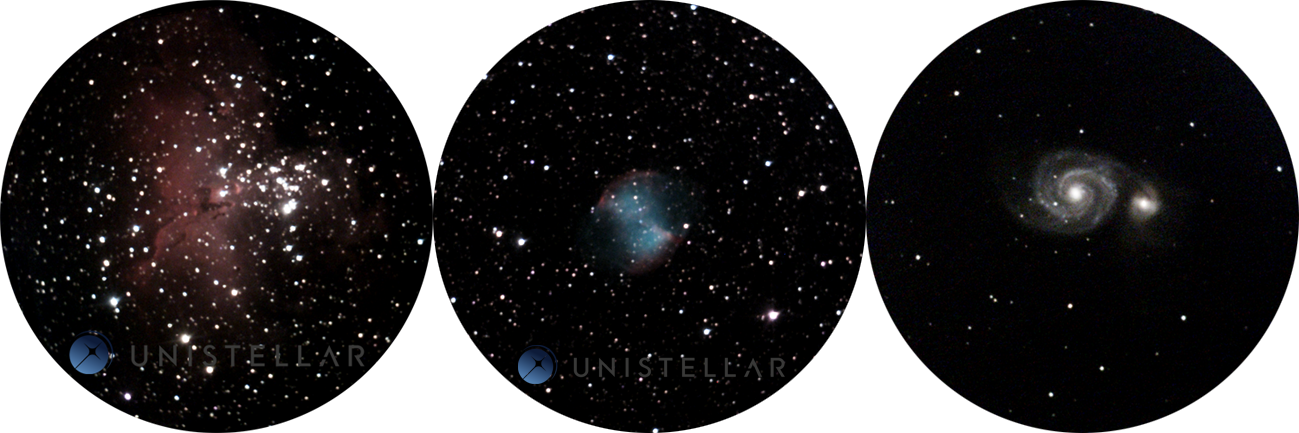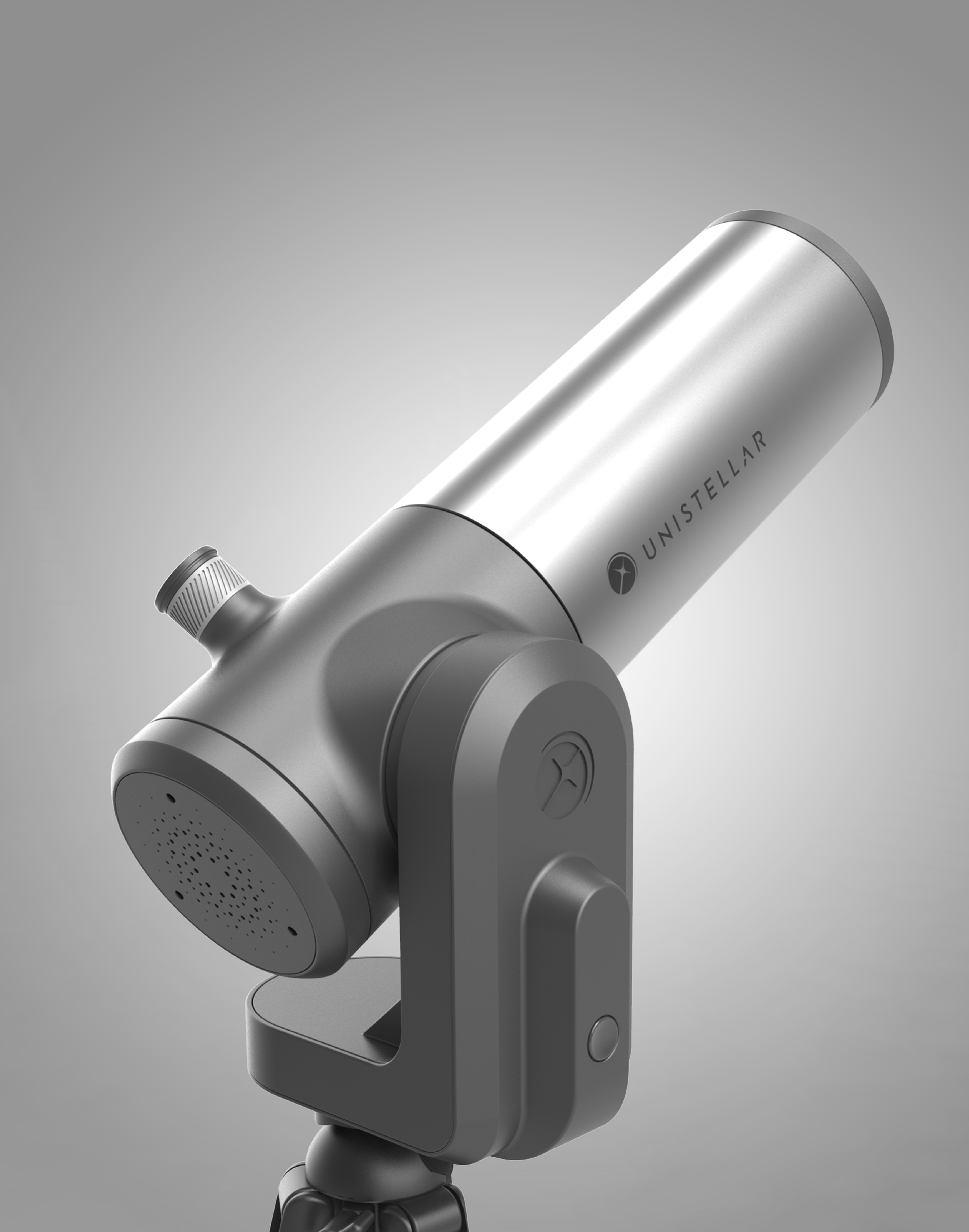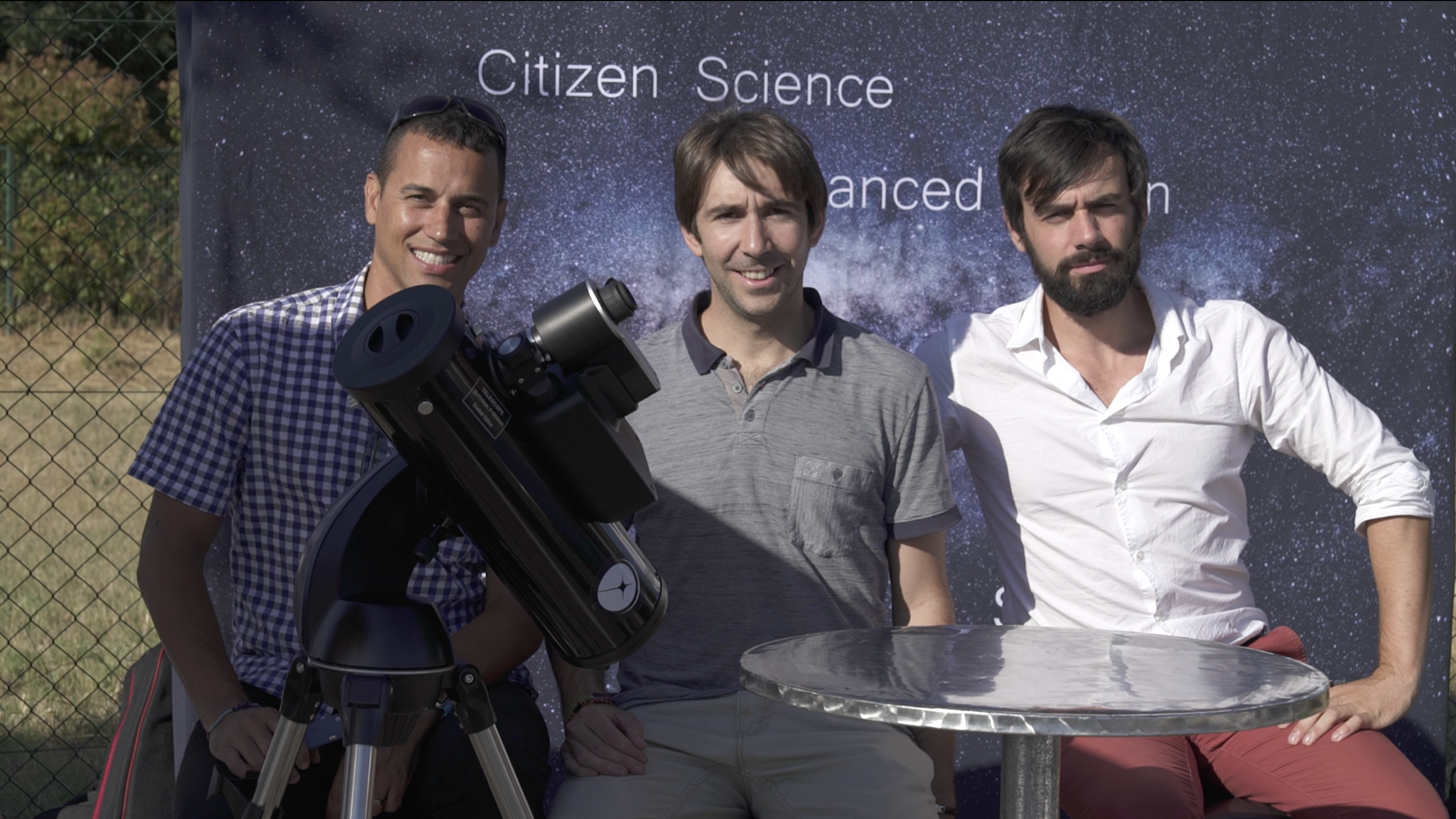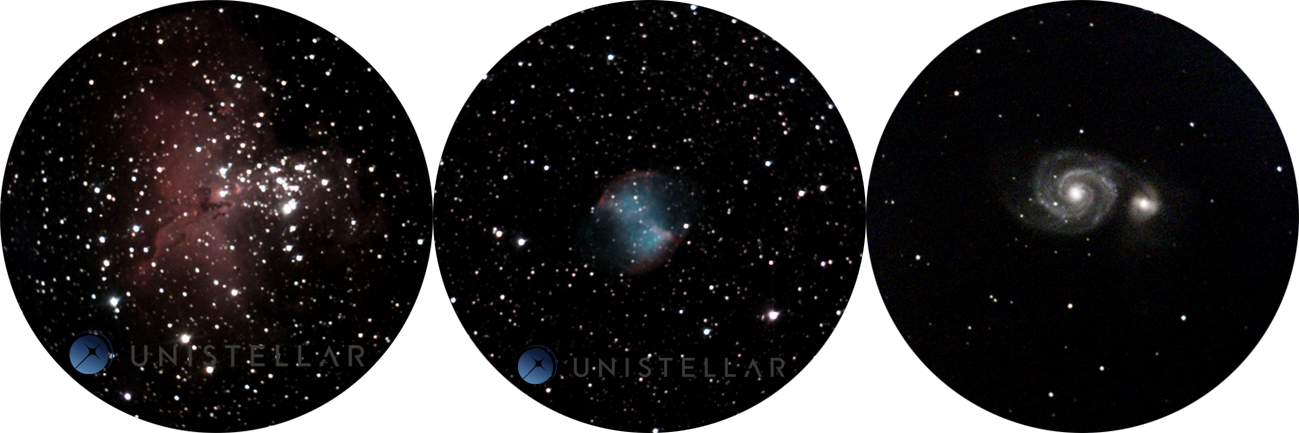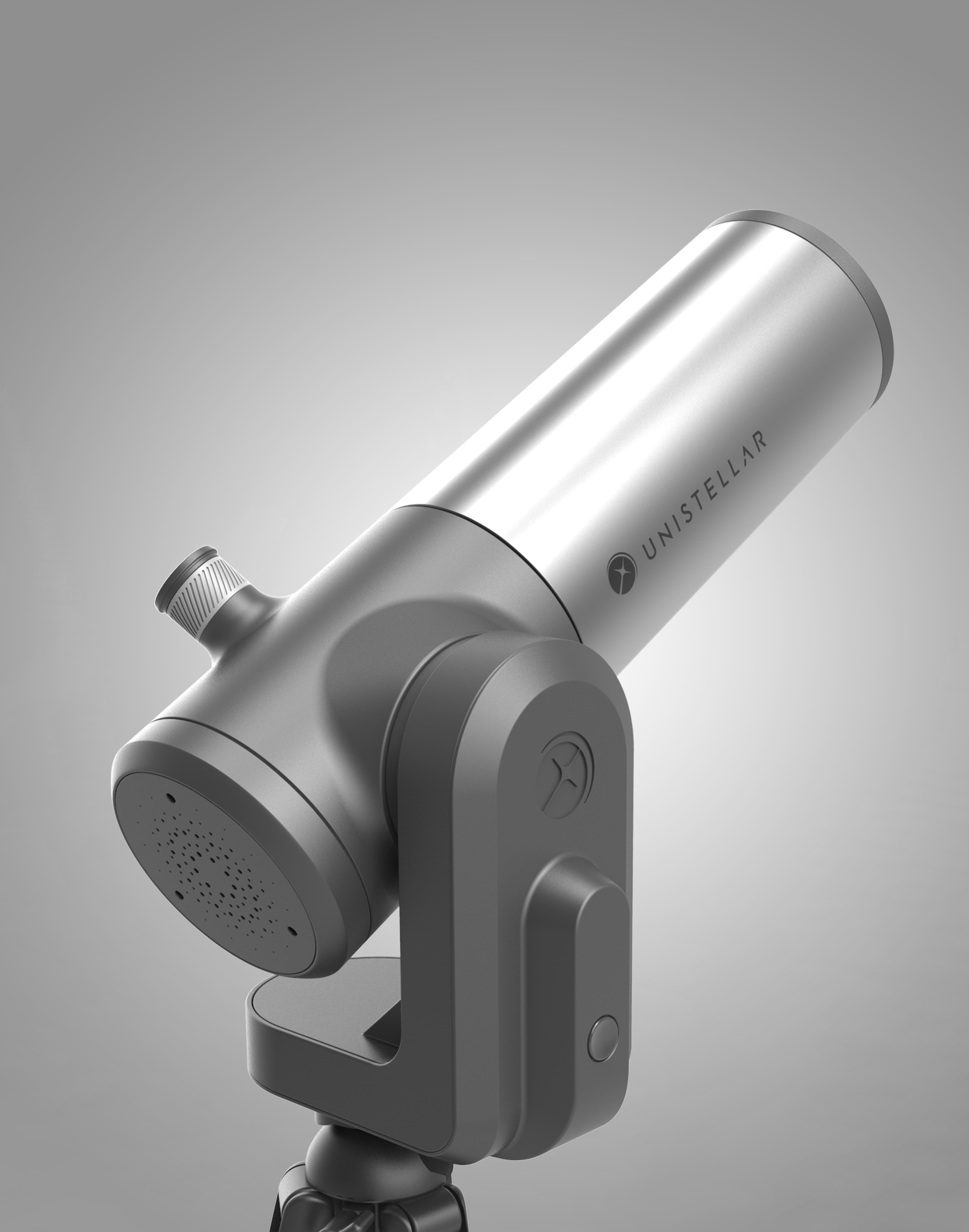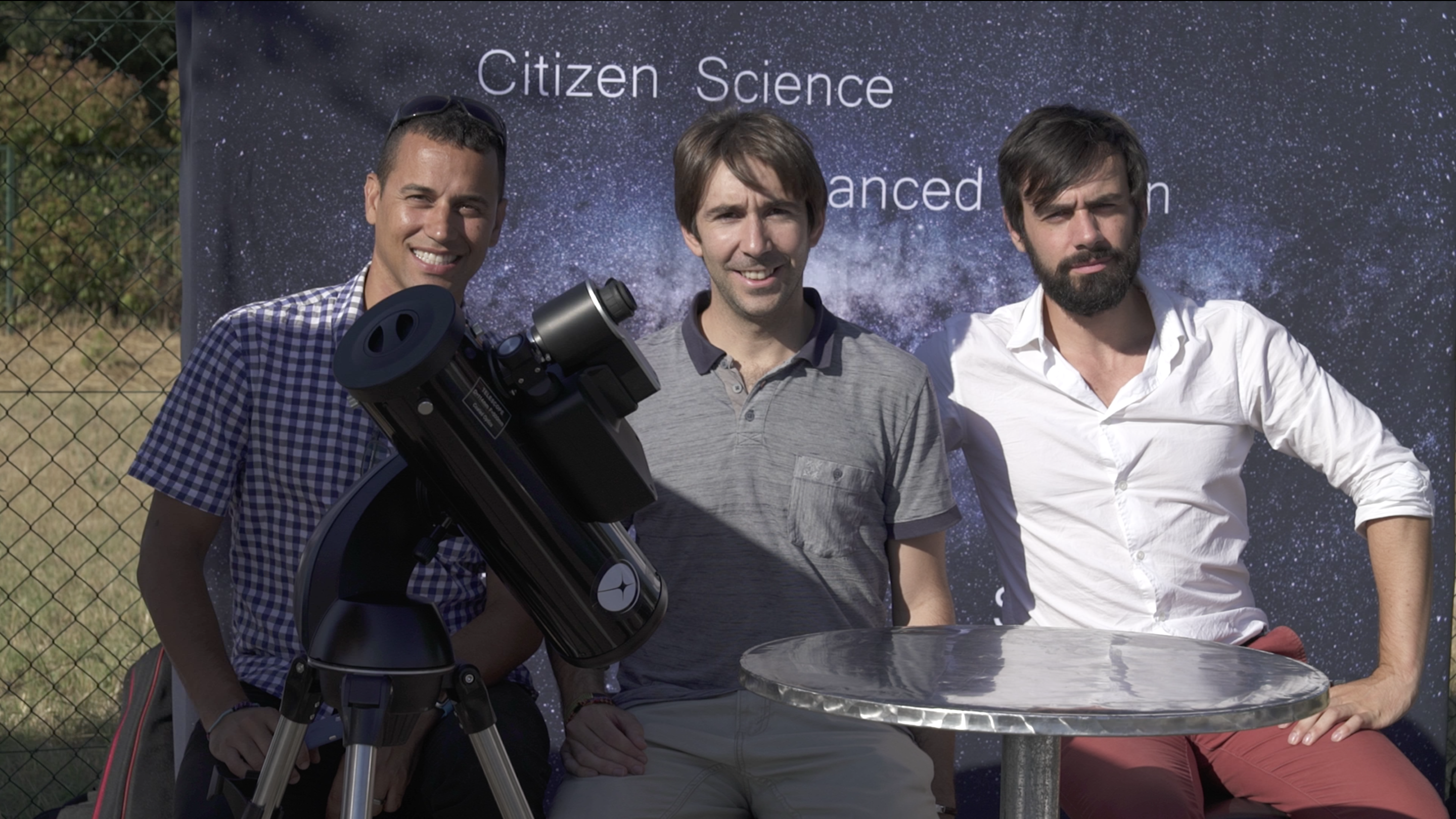We got a lot of requests for additional pictures of astronomical targets taken with the eVscope. Here some of them taken recently. One nebula, one galaxy, one planet in our solar system and our moon…. Enjoy!

The Omega Nebula (catalogued as Messier 17 or M17) is an H II region in the constellation Sagittarius. Magnification x50
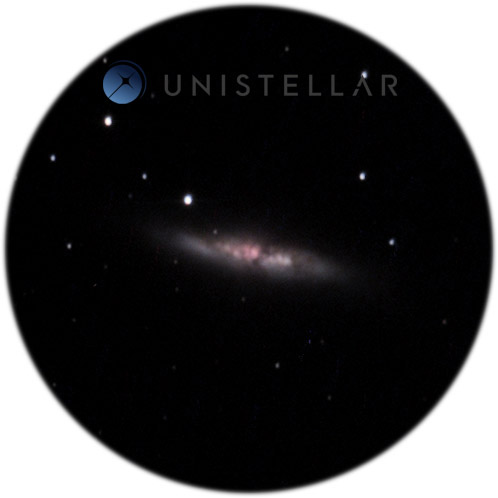
Cigar Galaxy (or M82) is a starburst galaxy about 12 million light-years away in the constellation Ursa Major . Magnification x100.
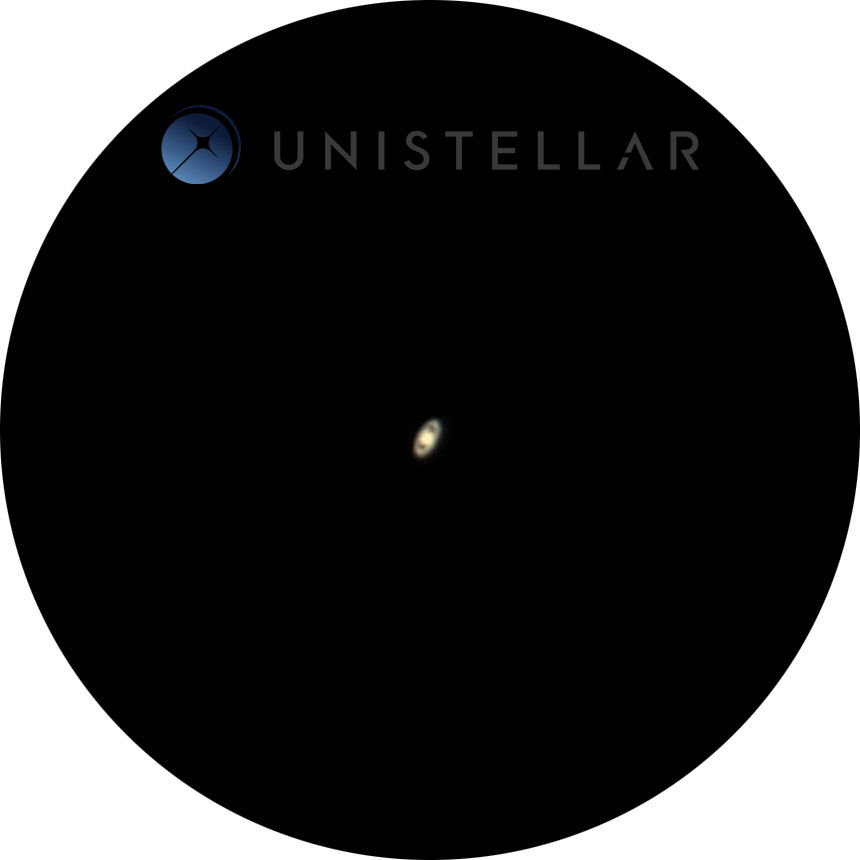
Saturn observed from Nairobi, Kenya with a numerical zoom x150 on October 29 2017. Image taken at 20 degrees elevation (poor atmospheric conditions). Exposure time 20 ms. Magnification x150
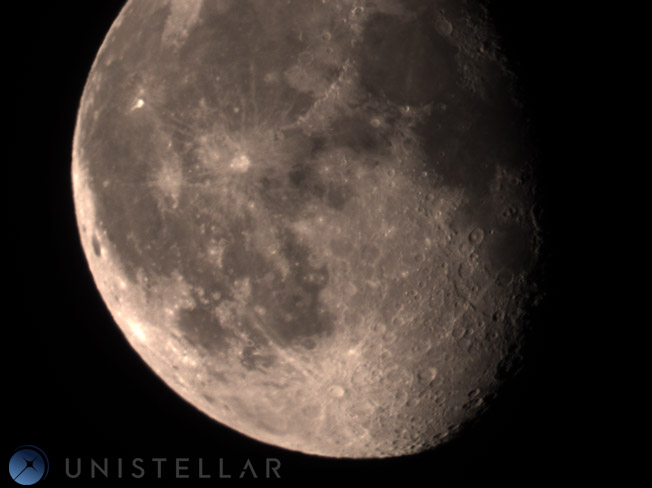
The moon rising from Aubagne, France near Marseille on November 7 at 20:30 CET with an elevation of 8 degrees C, hence its red color (exposure time 2 ms). Magnification x50
